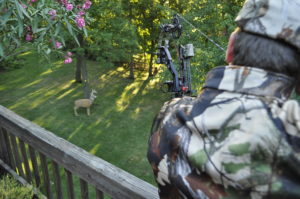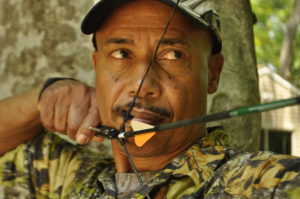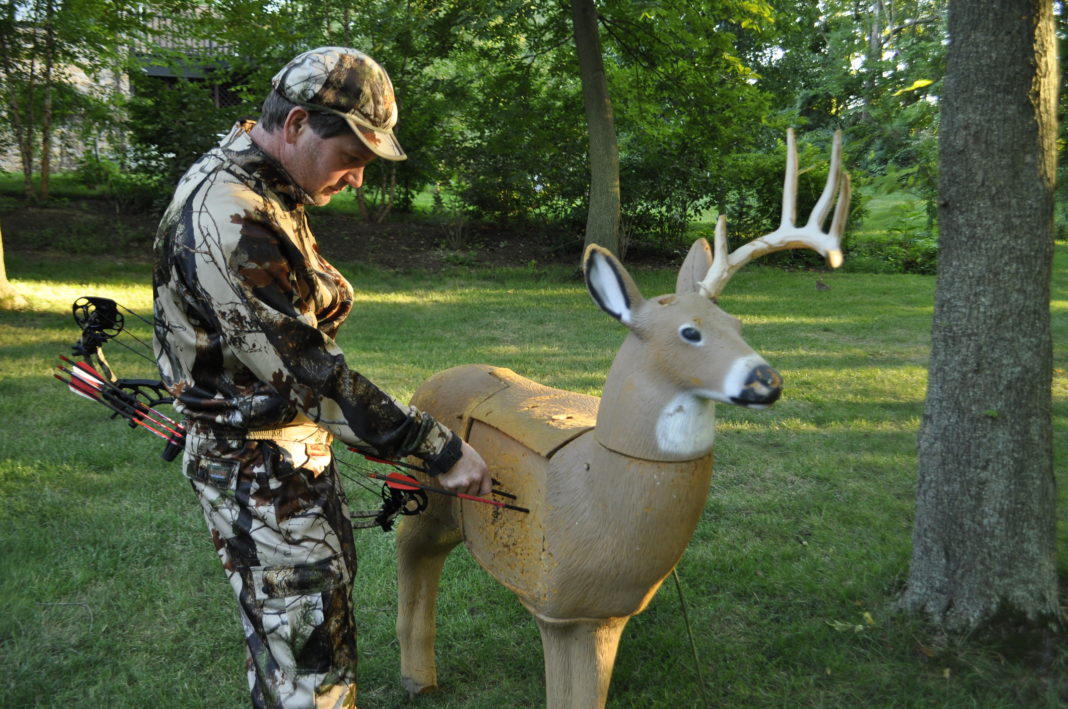Accuracy is the most important element of bowhunting. It defines your ability to harvest game ethically, an awesome responsibility. What is your effective kill range? Twenty yards? Forty yards? Only you can determine that answer and your practice regimen should dictate the answer.
So Many Variables

I once called a spring gobbler within 10 yards. I was at full draw as it stepped over a rise and stood perfectly still. I released and the broadhead found a slender sapling aligned perfectly with the bird’s neck and flared wide of the mark. I could have hit that gobbler 100 times in a row, had it not been for that stick, yet that’s part of the dilemma that archers face. You must not only know the distance, but have a perfectly clear shot.
Guessing Range
Crossbow hunters and vertical archers must estimate range well. A few years ago, I

developed an elk hunting strategy using a red dot scope. Since the device had just one dot, I zeroed the crossbow for 30 yards so that I’d shoot a little high at 20 and a bit low at 35 yards. Since this was my mostl likely range to shoot, I’d be within the kill zone and not have to worry about distance. In my overzealous state, I didn’t carry a rangefinder and had an elk walk from cover, stand broadside, and put its head down to drink at 50-60 yards. This was a dream shot, but I didn’t know the distance and the bull walked casually away. Not matter how much your practice, always carry a range-finding device.
Know Your Comfort Zone
Bill Badgley makes the case in this post from QDMA:
We are often told to get out of our “comfort zone” to make progress in life, but there are also times when we really need to stay in it. Bowhunting is one of those times.
What I’m talking about is knowing your limits, and your equipment’s limits, and not shooting at deer beyond them.
As soon as I started giving this some thought, it occurred to me we actually have to think about it as two zones. One is your comfort zone where you know what you and your equipment are capable of under perfect practice conditions. The other is what we’ll call your “ethical zone,” which is knowing and understanding the limits of you and your equipment under real-world hunting conditions.
www.qdma.com/stay-comfort-zone/



















![The Best Deer Camp Chili [VIDEO] Deer Chili Ingredients, Tomatoes, Chili Spices](/wp-content/uploads/2015/10/Deer-Chili-Deer-Camp-Recipe-218x150.jpg)
![How to Call Elk Early in the Season [VIDEO]](/wp-content/uploads/2016/08/byers003-218x150.jpg)




![Idiots Disturb Hunter: How Would You Have Handled It? [VIDEO]](/wp-content/uploads/2015/10/DSC00110-e1474487693878-100x70.jpg)
![Albino Buck Shocked to Shed His Antlers [VIDEO]](/wp-content/uploads/2015/10/AlbinoDeer-100x70.jpg)